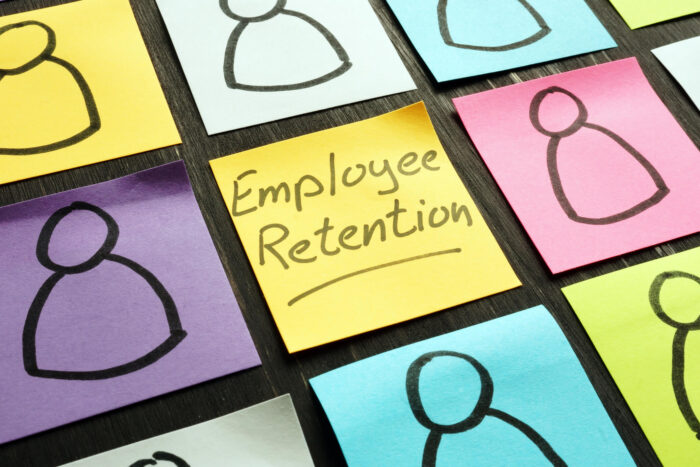
The labor market is constantly evolving. New transformations are ushering in every moment, and if you wish to stay ahead of the curve, you must keep up with the ongoing trends. The COVID-19 pandemic called upon unprecedented changes across the business sector, and it is no surprise that the labor market experienced numerous impacts. Now that the pandemic has dwindled, what will be the after-effect, and how will the scenario look in 2024? We will discuss all that in this article.
Biggest Trends in the Labor Market in 2024
2024 and 2024 witnessed a myriad of transformative events. The last two years have changed how businesses operate and hire people, be it the pandemic, the inflation, or the economic slowdown. The landscape of work has completely reformed, and companies now have a new formula for the kind of employees they want and how they are going to get them.
Here are some of the upcoming trends that will dominate the labor market in 2024. Some of these are not entirely new. However, the pandemic, along with other events, accelerated these trends.
1. Skilled Labor

The demand for skilled labor has skyrocketed in the last couple of years, especially with the increased incorporation of technology. Now that technology has become such a big factor, especially with the digital transformation that got triggered due to the pandemic, employers are keen to find workers with specific skills. Technical skills are in demand, particularly in industries like pharmaceuticals, IT, medical devices, healthcare, and biotechnology.
With such a shift, companies are now on the hunt for employees with specific technical skills relevant to the particular industry they work in. This trend is expected to grow more prominently in 2024 and beyond since the incorporation of technology is increasing by the day. Businesses seek to invest in new technologies and to enhance competitive advantage; workers skilled in specific abilities will be more in demand.
2. The Talent Challenge
As we discussed, the demand for skilled labor is increasing daily. However, this means that companies also have to face talent shortages since skilled labor is challenging to come by. Top professionals are being checked by big companies constantly. To stand out, these companies are trying to hire top talent. But as time goes by, with increasing market demands and decreasing talent pools, companies will need help making a team of professionals with specific skills.
While making a talented team of professionals is becoming increasingly difficult because of the talent shortage, companies can do a few things to attract and retain such employees. One is, of course, offering attractive salaries and benefits. Companies can only expect to hire top talent if they are ready to bear the cost to get them. To keep such specialists engaged and in the company, companies must give out competitive salaries and a stimulating workplace where the employees can grow to their full potential.
Another thing companies can do to hire top talent is invest in automated employee sourcing tools like SignalHire to make the process a whole lot easier. In this candidate-led job market, hunting down the best candidates is difficult. But if you have the right tools, you have nothing to worry about. You can check out their website if you want additional info on SignalHire.
Apart from automated tools, companies must also invest in employee development and training programs. Since the competition will only be getting more intense, businesses have to find better ways to stand out, and one great way to do that is by nurturing the current employee team. The employees can develop new skills and stay on top of emerging trends using development programs.
3. Contract Workers and Freelancers

Freelancing and contract working will likely become big trends in 2024. Ever since the pandemic, the hiring patterns of companies have vastly shifted, and they are more reluctant to hire full-time workers now. Since work-from-home has become the norm, companies are dividing their work and creating vacancies for part-time contract workers. Depending on the project type, these employees stay with the company for a certain period.
Contract workers can be a great boon to businesses since they can fill a temporary vacancy and get important projects done immediately. At the same time, recruiters take their time to look for permanent candidates. Most importantly, this allows companies to save time and resources since they won’t have to provide benefits or special offers. Furthermore, training costs can also be saved.
Just like contract working is becoming popular, freelancing is also turning over a new leaf in the labor market. Freelancers can work on a part-time basis with companies, and similar to contract workers, businesses can only commit to these employees partially. Moreover, a freelancing work-from-home workforce means you can hire talent from anywhere worldwide. This ensures that you have a diverse and inclusive group of people who can offer new ideas and bring their nuances to the equation.
4. Increase in AI
As we briefly discussed above, AI solutions are becoming more prominent than ever in the labor market. AI not only helps HR professionals to streamline the recruitment process but also companies to retain customers by creating an omnichannel approach. Beyond recruiting, AI can also help with performance management and training.
A big responsibility of companies is to nurture and develop their current team of professionals to get the most out of them. Suppose companies become successful in properly training and developing the team. In that case, they won’t have to start yet again looking for candidates from scratch, which only means wasting time and resources.
Thus, AI solutions can help improve the workforce and in helping the company achieve efficiency and productivity in every way possible. This allows HR specialists time to focus on other aspects of their job, like employee retention and engagement, which are equally important.
5. Employee Retention

Companies have to look for candidates, hire them, and do everything to retain those employees. Now that hiring top talent is becoming a priority and since there is a shortage, losing talented professionals is a loss that companies cannot afford. However, professionals are always looking for better opportunities, which means that there is always a chance that you might lose them to a company offering better conditions.
Thus, to make sure that doesn’t happen, a big trend that is taking place is employee retention. While taking care of employees has always been there, it has accelerated in recent years. Your company must invest in development programs and innovative ideas to keep the employees engaged. Employment programs help companies to assess the performance of their employees and measure their satisfaction, helping companies understand what needs to be done to retain them.
6. Prioritizing Employee Wellness
Taking care of employees doesn’t only mean offering them a nice paycheck or a creative environment. Employees can work to their full potential only if they are physically well. And the need for this has been realized, especially after the pandemic, when the entire world plunged into unhealthy mode. Not only that, but the recession, along with other sociopolitical events, has been increasing people’s stress levels, impacting their work.
Employees are now constantly worried about their health, families, and the market volatility, and this has been affecting the overall labor market. Thus, a new HR trend is to identify mental health concerns among employees and provide the necessary resources to deal with them. A company can propel towards success only if the employees are satisfied, and it does not mean only financially but also mentally and physically.
Therefore, companies should promote a healthy working environment. They should offer gyms, an unwinding place, and healthy canteen food so that employees can stay on top of their health, among other things. Companies should also encourage exercise routines, fitness programs, and healthy habits. This will help the employees and the company since a healthier team of professionals means fewer sick leaves and increased work efficiency.
Lastly, mental and physical wellness also means that the employees will be motivated to work better and commit to their roles better.

Final Thoughts
The labor market has seen more than a few changes in the past few years, and in 2024, it will catalyze numerous new trends. If you wish to keep up with the trends and make sure that you are aware of industry alteration and how to keep your employees satisfied, keep in mind the trends mentioned above which are expected to be big in 2024.
















